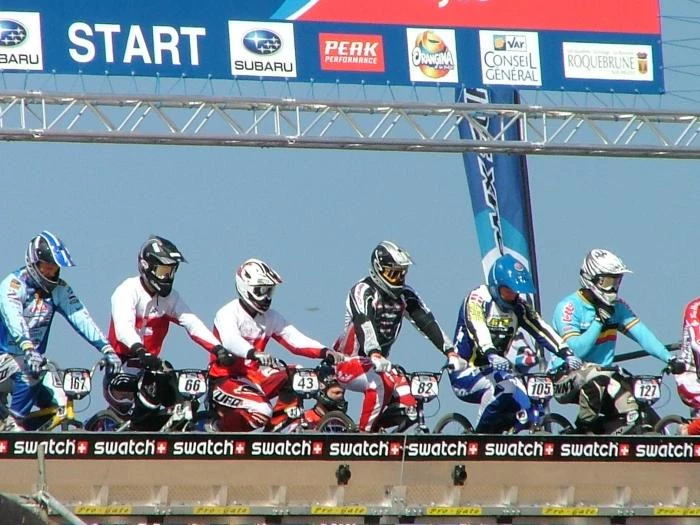BMX bike racing and ranking
BMX racing started life in Los Angeles in the USA as an alternative to motocross racing and quickly became a popular worldwide sport enjoyed by thousands.
Today BMX races are typically held on purpose-built racetracks with many hills and jumps with banked corners or berms.
While BMX racing is primarily an individual sport, teams are often formed, and clubs are usually family-friendly, with riders aged five to 90 years.
Some regional, national and international bodies provide rules for competition and organised events and set out skill classifications and other regulations.
In the UK, BMX bike racing is overseen by the British Cycling Federation, which provides rules and guidelines for holding events that include a code of conduct, membership and licencing, track competition standards and penalties for infringements. Details of BMX rules and regulations can be found here.
Notching up the points
Competition riders can notch up points by participating in organised BMX races and eventually achieve a ranking based on placement at the end of a race event. Competitors in Olympic and World Championship meetings can earn the highest ranking points, while other events, such as international, national and regional races, have their own point scales. The current ranking for BMX riders is maintained in a database run by British Cycling, and points are updated daily.
These ranking points are only awarded for events run by British Cycling, the Union Cycliste Internationale (UCI) and the European Cycling Union (UEC).
A BMX bike racer's ranking is calculated from the 12 best results in any one year, where the racing year runs from December 1 to November 30. Racing points earned in Olympic, World and European championship events are automatically added to riders' rankings. Still, British Cycling has to be informed of any points scored at other international events. Only BMX riders with a full racing licence can be awarded ranking points, so anyone planning to participate in competitive BMX bike racing should consider being a fully authorised member of British Cycling. Membership usually includes a provisional racing licence to get riders into most BMX races, but any race wins will not count towards ranking.
Surge in BMX track building
BMX racing is a great cycling sport to participate in and watch, with categories for all ages and abilities, and there has been a surge in BMX track building around Britain and overseas.
Clark & Kent Contractors has been at the forefront of BMX track design and building in recent years and has even contributed to drawing up the UCI's minimum track standards as well as constructing the track for the 2012 Olympics. BMX races are held on purpose-built outdoor and indoor tracks across the country. They can be made of compacted dirt, stone, and tarmac. They are usually up to 400 metres long and feature a starting hill, banked corners, and various jumps. The Olympic-standard track at Manchester's National BMX Centre was remodelled by Clark & Kent to bring it up to top international standards in 2012.
BMX is the sport for everyone
But BMX racing doesn't have to take place on high-level tracks like Manchester. Wherever an event is held, the riders and public can be assured of relentless, all-day action that kicks off with qualifying heats, called 'motos' before entering the knockout stages before the final stages.
Races generally last well under a minute, and riders take off in quick succession, so it's an exciting day of fast and furious sport for everyone. In Britain, there are regional racing leagues and BMX Series events throughout the year, as well as the National BMX Championships.
Related articles
BMX track race standards
Core BMX riding skills
Track racing and start gates
Endorsements


